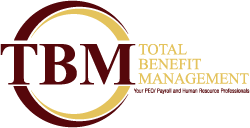- Total Benefit Management

4 Reasons CEOs Should Sit With Their Teams
August 7, 2018
5 Signs Your Employees are Nearing Burnout
August 14, 2018When you’re in the middle of hiring a new employee, be careful not to be biased, even unintentionally.
This article comes from Entrepreneur.
6 Common Hiring Practices With Unintentional Bias
These six slip-ups are in fact common primarily because the underlying bias is accidental (and, for many, non-obvious at first glance).
1. Writing exclusionary job descriptions
Well-meaning managers and recruiters can inadvertently discourage whole groups of would-be applicants by using gendered, ageist or otherwise restrictive terms in job descriptions.
Job Postings like Social Media “Rock Start” and Analytics “Ninja” give off a male-oriented feel, and could turn off some people.
You should also avoid using the word “required” if it’s more just a nice-to-have skill. Research shows women are significantly more likely to interpret this as literal and might forego applying if they don’t meet exact qualifications.
2. Overlooking (or not expanding beyond) certain job boards
Think about where you post your jobs:
- Are your listings reaching a diverse audience?
- Do you stick only to mainstream job boards?
- Are you partial to niche sites, exclusive networks or certain college job hubs?
None of these approaches are inherently bad but be mindful of how wide (or not) of a net you’re really casting.
It’s fine to target these sites and networks, but not at the exclusion of other job boards and communities that could just as well send you great candidates.
3. Filtering for big-name schools or brands
By favoring certain universities or companies, you’re adopting other institutions’ admissions or selection criteria, which are undoubtedly rife with their own biases, so be careful when going down this route.
4. Using non-diverse interview panels
No one is immune to developing implicit biases, the automatic assumptions, and generalizations based on society’s stereotypes we all subconsciously make.
Unfortunately, these skewed views often go unchecked in the interview process due to using a non-diverse mix of interviewers.
Having multiple backgrounds and worldviews in the interview loop helps counter incorrect presumptions and illegitimate hiring decisions.
To continue reading this article, click here.

